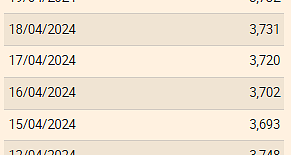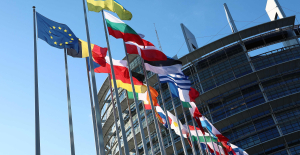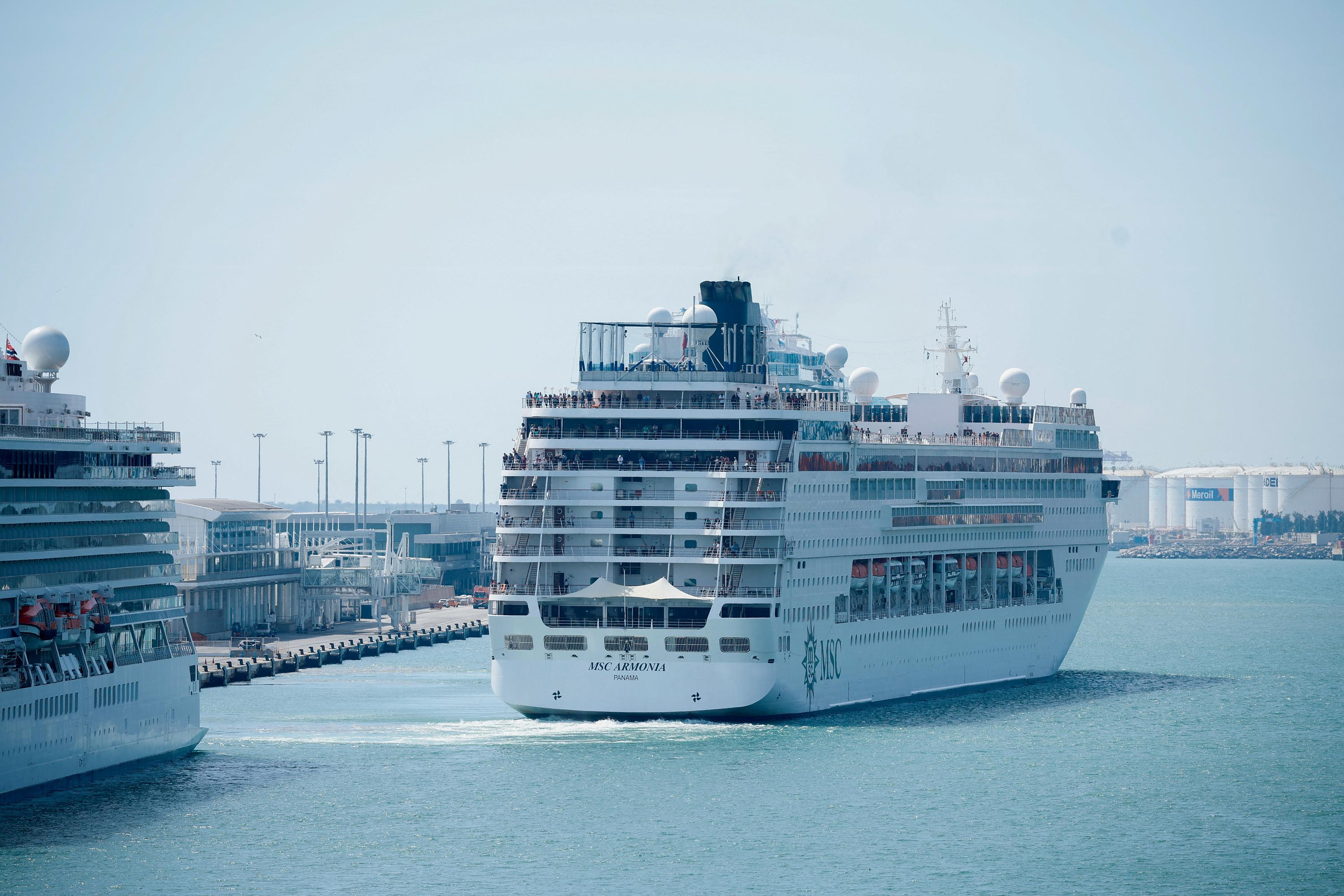The disappearance of one species often has a cascading impact on entire ecosystems. Researchers have calculated using a computer model that more than half of the food web connections of terrestrial mammals have been lost in the past 130,000 years due to the extinction of species or reduced ranges.
The emergence and spread of humans led to a sharp decrease in the complexity of food webs in the respective region, as the scientists working with Evan Fricke wrote in the journal Science at the time of the study at Rice University in Houston. While the decline in mammals is a well-documented feature of the biodiversity crisis, it has not been clear to what extent these losses have already impacted global networks.
The food web is defined as all the connections between predators and their prey in a geographic area. There are simpler systems in which, for example, an animal species has only one or a few predators or a predator specializes in a specific prey. A network is complex if, for example, a predator has a whole range of species on its menu.
If such a predator dies out, several connections are lost at the same time, the network becomes simpler - and thus more unstable, as Eoin O'Gorman explains in a comment on the study. Both in the past and in the present, it is precisely those species with many connections that have disappeared the most, as Fricke's researchers write.
A well-known example of a cascade of consequences when a species disappears is the overhunting of sea otters. The predators live near the coast of Alaska and the North American Pacific coast, where they are at the top of the food chain. Hunted to the point of extinction, there were hardly any sea otters that ate sea urchins. These spread rapidly and consumed far greater amounts of seaweed than before. This in turn is the habitat of a number of species and the nursery of many fish. In addition, seaweed binds large amounts of climate-damaging CO2 and protects coasts from storms.
There have also been similar consequences in other cases in recent history - which often also reflected back on their causer, the people. Because many lions and cheetahs were shot in Africa, baboons multiplied and spread and got more contact with humans - with more parasite transmissions as a result. Hunting sharks in a coastal ecosystem led to the proliferation of rays, which in turn led to the collapse of mussel populations.
And when India's vulture populations shrank by 90 percent or more because of the toxic painkiller diclofenac used in cattle, feral dogs proliferated because of the now often abandoned carcasses - which resulted in more rabies transmissions.
The results of Fricke's team not only underline the effects of species loss on the long-term survival and functioning of ecosystems: they also show the possibility of restoration, as the scientists emphasize. About half of the calculated declines in the food web are due to the extinction of species - but the others are due to the reduction in the range of existing species. Reintroducing these species throughout their original habitat has great potential to restore more complex food webs.
The findings of ecosystem researchers are mostly based on long-term observations, stomach content analyzes and experiments to clarify the complex structures within the many food webs worldwide. The scientists working with Fricke used a different approach: they compiled a global database with characteristics of extinct and extant mammals, geographic ranges and predator-prey interactions. Based on this, they used a machine learning approach to model changes in the global food webs of terrestrial mammals since the Late Pleistocene.
Although only about 6 percent of terrestrial mammal species have died out since then, more than half of the global food web connections have been lost. "When an animal disappears from an ecosystem, its loss affects the entire web of connections that connect all species in that ecosystem," says Fricke. His team's work offers new tools "to measure what has been lost and what will be lost as endangered species become extinct." It is also possible to see the ecological complexity that can arise as a result of settlement projects, for example.

 The Euribor today remains at 3.734%
The Euribor today remains at 3.734% Germany: the trial of an AfD leader, accused of chanting a Nazi slogan, resumes this Tuesday
Germany: the trial of an AfD leader, accused of chanting a Nazi slogan, resumes this Tuesday New York: at Columbia University, the anti-Semitic drift of pro-Palestinian demonstrations
New York: at Columbia University, the anti-Semitic drift of pro-Palestinian demonstrations What is Akila, the mission in which the Charles de Gaulle is participating under NATO command?
What is Akila, the mission in which the Charles de Gaulle is participating under NATO command? What High Blood Pressure Does to Your Body (And Why It Should Be Treated)
What High Blood Pressure Does to Your Body (And Why It Should Be Treated) Vaccination in France has progressed in 2023, rejoices Public Health France
Vaccination in France has progressed in 2023, rejoices Public Health France Food additives suspected of promoting cardiovascular diseases
Food additives suspected of promoting cardiovascular diseases “Even morphine doesn’t work”: Léane, 17, victim of the adverse effects of an antibiotic
“Even morphine doesn’t work”: Léane, 17, victim of the adverse effects of an antibiotic MEPs validate reform of EU budgetary rules
MEPs validate reform of EU budgetary rules “Public Transport Paris 2024”, the application for Olympic Games spectators, is available
“Public Transport Paris 2024”, the application for Olympic Games spectators, is available Spotify goes green in the first quarter and sees its number of paying subscribers increase
Spotify goes green in the first quarter and sees its number of paying subscribers increase Xavier Niel finalizes the sale of his shares in the Le Monde group to an independent fund
Xavier Niel finalizes the sale of his shares in the Le Monde group to an independent fund Owner of Blondie and Shakira catalogs in favor of $1.5 billion offer
Owner of Blondie and Shakira catalogs in favor of $1.5 billion offer Cher et Ozzy Osbourne rejoignent le Rock and Roll Hall of Fame
Cher et Ozzy Osbourne rejoignent le Rock and Roll Hall of Fame Three months before the Olympic Games, festivals and concert halls fear paying the price
Three months before the Olympic Games, festivals and concert halls fear paying the price With Brigitte Macron, Aya Nakamura sows new clues about her participation in the Olympics
With Brigitte Macron, Aya Nakamura sows new clues about her participation in the Olympics Skoda Kodiaq 2024: a 'beast' plug-in hybrid SUV
Skoda Kodiaq 2024: a 'beast' plug-in hybrid SUV Tesla launches a new Model Y with 600 km of autonomy at a "more accessible price"
Tesla launches a new Model Y with 600 km of autonomy at a "more accessible price" The 10 best-selling cars in March 2024 in Spain: sales fall due to Easter
The 10 best-selling cars in March 2024 in Spain: sales fall due to Easter A private jet company buys more than 100 flying cars
A private jet company buys more than 100 flying cars This is how housing prices have changed in Spain in the last decade
This is how housing prices have changed in Spain in the last decade The home mortgage firm drops 10% in January and interest soars to 3.46%
The home mortgage firm drops 10% in January and interest soars to 3.46% The jewel of the Rocío de Nagüeles urbanization: a dream villa in Marbella
The jewel of the Rocío de Nagüeles urbanization: a dream villa in Marbella Rental prices grow by 7.3% in February: where does it go up and where does it go down?
Rental prices grow by 7.3% in February: where does it go up and where does it go down? Europeans: “All those who claim that we don’t need Europe are liars”, criticizes Bayrou
Europeans: “All those who claim that we don’t need Europe are liars”, criticizes Bayrou With the promise of a “real burst of authority”, Gabriel Attal provokes the ire of the opposition
With the promise of a “real burst of authority”, Gabriel Attal provokes the ire of the opposition Europeans: the schedule of debates to follow between now and June 9
Europeans: the schedule of debates to follow between now and June 9 Europeans: “In France, there is a left and there is a right,” assures Bellamy
Europeans: “In France, there is a left and there is a right,” assures Bellamy These French cities that will boycott the World Cup in Qatar
These French cities that will boycott the World Cup in Qatar Serie A: Bologna surprises AS Rome in the race for the C1
Serie A: Bologna surprises AS Rome in the race for the C1 Serie A: Marcus Thuram king of Italy, end of the debate for the position of number 9 with the Blues?
Serie A: Marcus Thuram king of Italy, end of the debate for the position of number 9 with the Blues? Milan AC-Inter Milan: Thuram and Pavard impeccable, Hernandez helpless… The tops and flops of the derby
Milan AC-Inter Milan: Thuram and Pavard impeccable, Hernandez helpless… The tops and flops of the derby Ligue 2: Auxerre leader, Bordeaux in crisis, play-offs... 5 questions about an exciting end of the season
Ligue 2: Auxerre leader, Bordeaux in crisis, play-offs... 5 questions about an exciting end of the season


















